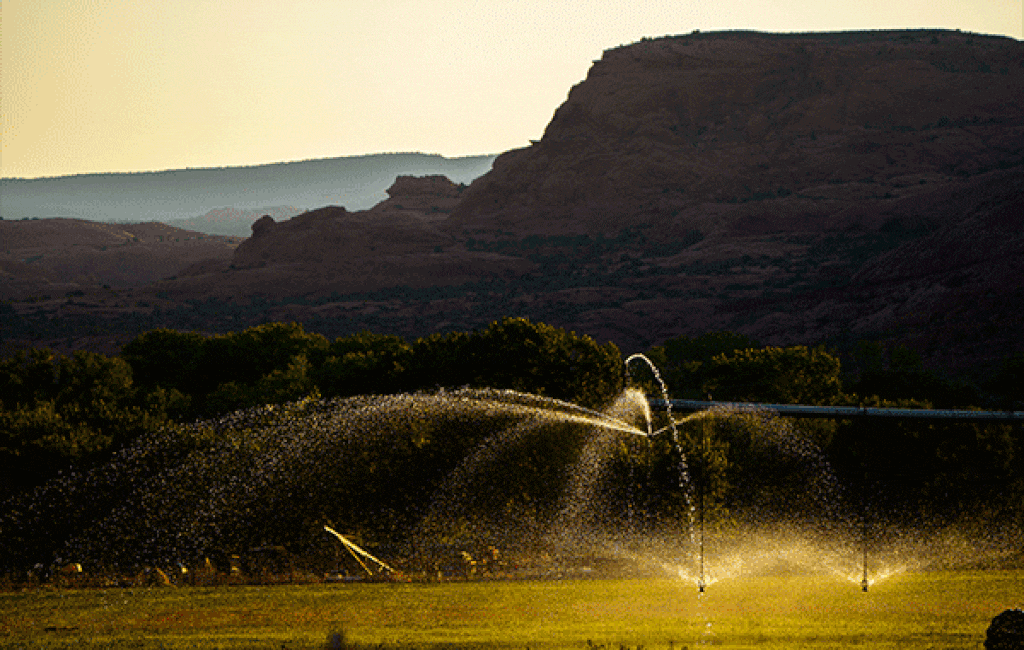Admin
February 24, 2022
Ari Goldfarb: With deepening drought in the West, farmers could make a bigger difference

The American West is suffering from the worst drought of our lifetimes — a two-decade dearth of precipitation, perhaps the most punishing megadrought of the past 1,200 years — and much attention is focused on water waste at home rather than water-reuse.
Drought-tolerant landscaping, precisely engineered shower heads, low-flow toilets are all excellent ways to make the most of the limited water supplies where we live.
But all the talk and press coverage about water conservation at home misses one important point: The biggest water consumers in the West, by far, are farmers.
In California, 80% of all water use is by irrigated agriculture. That’s four times more than all cities and suburbs in California, combined. But perhaps too much focus during drought has been on urban water users, who have been asked to cut back water use this year by 15%.
Water use in other drought-stricken Western states is similarly skewed: Agriculture accounts for 75% or more of all water consumption in Arizona, Colorado, Idaho, New Mexico and Utah.
This all adds up to some odd priorities: While city residents are urged to install flow-restricting aerators on kitchen faucets to cut indoor water use, many ranchers routinely use flood irrigation from open ditches to grow alfalfa hay.
It’s true that most urban residents can improve their water efficiency. But farmers can, too, and the benefits can be dramatic.
In arid places such as Australia, Israel and Spain, farmers have been saving billions of gallons by converting from traditional ditch and sprinkler irrigation to drip irrigation.
At the very least, drip irrigation, using enclosed pipes and tubes to deliver water directly to the root system of an individual plant, allows farmers to cut water use by 30% to 60%. In India, drip-irrigating farmers have achieved water savings of 90%.
Recent advances in technology allow drip irrigation farmers to install soil moisture sensors that deliver the precise amounts of water directly to root systems. It also allows automatic shut-off during rainstorms, and delays of irrigation during wet times.
The technology is spreading to the U.S., especially in California, the No. 1 agricultural state, where drip is being used successfully on crops with individual plants, such as tomatoes, watermelons, and pumpkins.
A modern system costs about $700 per acre to install, but the economic payback times are shortening as technology improves and farmers realize that drip allows them to cut back on the use of costly fertilizers and agricultural chemicals.
Making more efficient use of farm water offers another big environmental benefit. Every time a field is flood-irrigated, the result is runoff that carries contaminants such as fertilizer, pesticides, salinity and natural but harmful elements such as selenium into waterways.
Agricultural runoff has been a leading cause of environmentally destructive red tides in Florida and fish-killing algae blooms in the Great Lakes.
Another way for agriculture to gain efficiency is through reuse of city wastewater. For decades, cities merely discharged treated sewage into oceans, rivers and creeks.
In the new era of scarcity, however, water can and should be used more than once. A partnership between urban utilities and rural irrigators can benefit both.
Treated wastewater can be a reliable and valuable irrigation supply for many crops. Greater organic loads in treated wastewater means farmers can spend less on fertilizer
However, both utilities and farmers must be careful with the quality of wastewater being applied to food crops. Grapes, for example, are sensitive to boron, a chemical used in many laundry detergents that is difficult to remove from wastewater. Almonds are sensitive to salinity that tends to accompany urban wastewater flows.
Still, many areas report great success with wastewater reuse. Israel now recycles 90% of its wastewater through agriculture, a practice that has greatly helped that country’s push toward food independence.
It’s cheaper to save water than to waste it. In the worst drought of the millennium, all water users should focus on making the most efficient use of a scarce natural resource, whether they account for 20 percent of all Western water use – or 80 percent.
Republished from: https://www.sltrib.com/opinion/commentary/2021/08/13/ari-goldfarb-with/
Interested to learn more? Please read more about Kando Pulse.
Would like to receive more details download our case study!

Kando is attending WateReuse, let’s connect in Texas!
Your wastewater contains the data.
We just need to extract it so that you can optimize your operations.
Contact us and a member of our team will get back to you as soon as possible.






